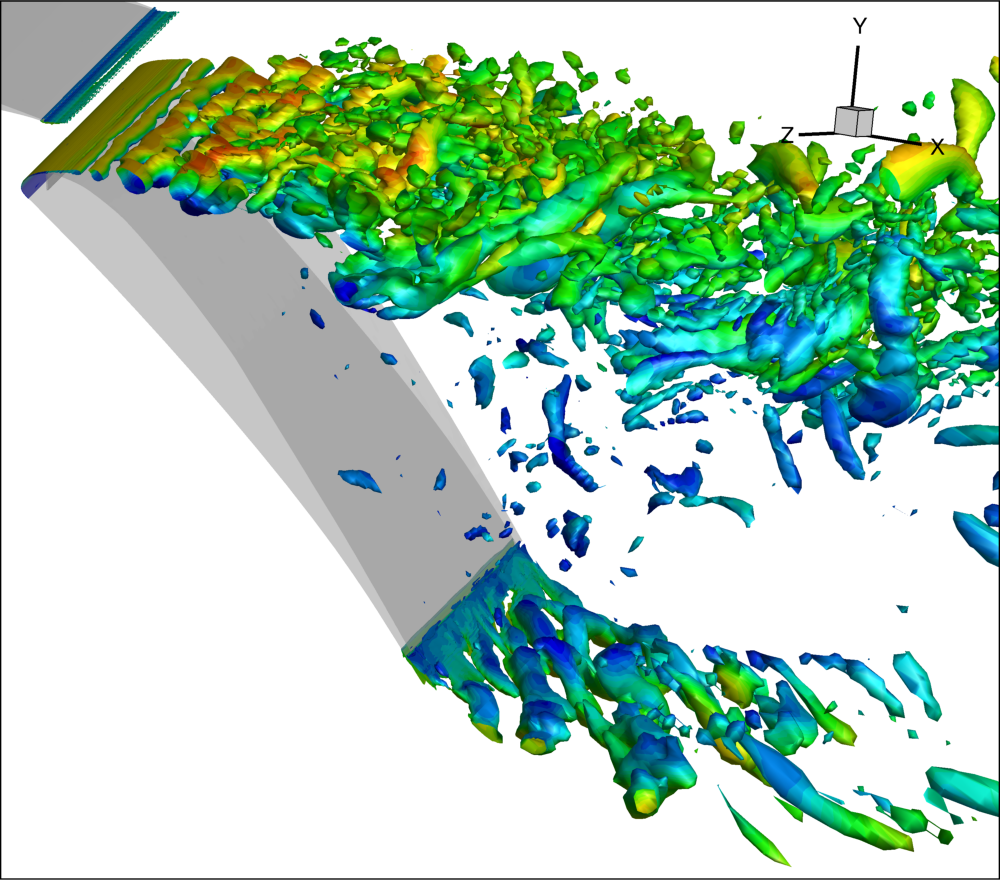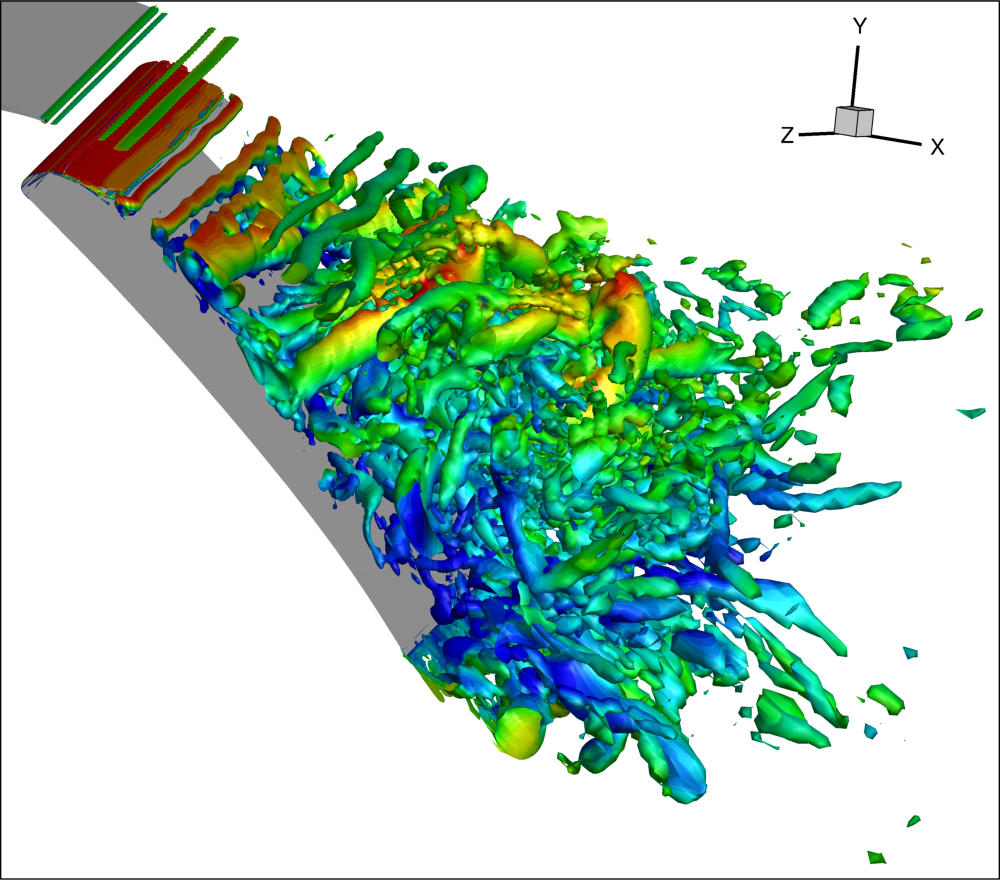tobias.hoell@cfd.tu-berlin.de

Dipl. Ing. Tobias Höll
FG Numerische Fluiddynamik
High-lift systems are commonly used on commercial aircrafts to increase the lift during takeoff and landing. Over the past decades, these systems consisting of slat and flaps have been highly optimized, so that there is hardly any potential for further performance increase using conventional methods. On the other hand, performance increase is still desirable, for instance in order to reduce the weight by reducing the size of flaps, or in order to reduce the system complexity by reducing the number of flaps. The lift increase is limited by the fact that the flow on the flap separates if the angle of attack and/or the flap deflection angle become too high. It is the goal of this project to attenuate or avoid flow separation on the flap by applying active flow control methods. Using numerical simulations based on the unsteady Reynolds-averaged Navier-Stokes equations (URANS) and on Detached-Eddy Simulation (DES), these control methods are investigated, focussing in particular on periodic or pulsed blowing and suction on the flap. Based on previous work in SFB 557, project A2, flow control is first applied to a Swept-Constant-Chord-Halfmodel (SCCH) to investigate segmented actuators. Afterwards, the same approaches are applied to more realistic and more complex Airbus wing models that exhibit sweep as well as tapering.

The situation without active separation control.

The same situation with active separation control.
This work is part of the SFB research project 557.
| Tobias Höll tobias.hoell@cfd.tu-berlin.de |

|
|
Dipl. Ing. Tobias Höll |
FG Numerische Fluiddynamik |